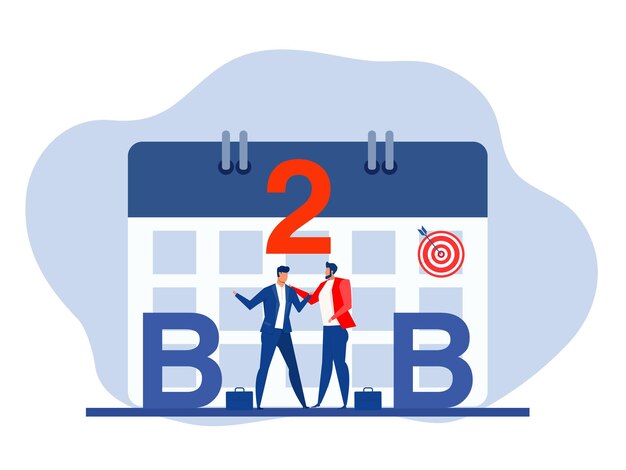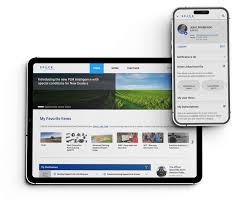Designing Effective b2b partner programs Strategy, Metrics, and Growth Leave a comment

The modern route to scalable revenue increasingly runs through ecosystems and alliances; platforms like b2b partner programs partner2b.com illustrate how technology and process combine to enable profitable, repeatable b2b partner programs for vendors and service providers.
A b2b partner program is not a marketing campaign or a single sales channel: it is a structured system for turning external organizations into reliable extension points of your go-to-market strategy. Done well, partner programs expand market reach, accelerate sales cycles, deepen customer trust through local expertise, and improve product adoption. Done poorly, they consume resources, create channel conflict, and deliver inconsistent customer experiences.
Successful programs begin with clarity of objectives. Are you seeking new logos, better coverage in specific geographies, industry vertical specialization, upsell into existing accounts, or technology integrations that enhance product value? Defining primary goals dictates partner types you should recruit (resellers, referral partners, systems integrators, technology partners, MSPs), the metrics you’ll track, and the incentives you’ll offer.
Segmentation matters. Not all partners bring the same value or require the same treatment. High-touch strategic partners that co-sell and integrate deeply will need executive alignment and customized enablement. Transactional resellers require streamlined onboarding, catalog access, and automated deal registration. Clear tiers based on performance, capabilities, and specialization help you allocate resources efficiently and set expectations for both sides.
Onboarding and enablement are the backbone of partner readiness. Provide concise technical documentation, role-based training, sales battlecards, demo environments, and marketing assets. Include a structured certification path so partners can demonstrate competency. Regular enablement rhythms — webinars, playbooks, and joint account planning sessions — keep partners engaged and effective over time.

Incentive design should align with desired behaviors. A mix of margin-based rebates, MDF (market development funds), performance accelerators, and deal registration protection can motivate partners at different stages. Keep incentives transparent and timely; delays in payouts or opaque calculation methods erode trust and discourage future effort. Consider non-monetary rewards too: lead prioritization, co-marketing opportunities, executive access, and product roadmap influence are powerful motivators.
Technology is a multiplier. A partner relationship management (PRM) platform automates enrollment, training, deal registration, lead distribution, revenue tracking, and MDF management. Integrations with CRM, billing, and analytics systems reduce manual work and create a single source of truth for partner performance. Use automation to scale processes, but maintain human touchpoints for strategic relationships.
Governance and policies set boundaries that prevent channel conflict and protect margins. Define clear rules for deal registration, territory rights, pricing floors, and co-selling roles. Establish escalation paths to resolve disputes quickly. A simple, well-documented set of policies reduces friction and builds partner confidence.
Measurement should be outcome-focused. Track KPIs such as partner-generated pipeline, conversion rate, deal velocity, average deal size, churn among partner-sourced customers, and partner lifetime value. Complement quantitative metrics with qualitative feedback from partners and joint customers to spot friction points in the experience and identify improvement opportunities.
Recruitment is both art and science. Seek partners with relevant customer relationships, complementary skills, and a track record of success in similar engagements. Use pilot programs to validate fit before committing significant resources. A well-designed partner profile and scorecard help prioritize outreach and accelerate selection.

Co-marketing and demand generation amplify partner efforts. Provide co-branded content, joint webinars, case studies, and paid programs to drive awareness and generate leads. Align marketing calendars and target accounts to ensure campaigns are relevant and synchronized. Measuring the ROI of co-marketing investments informs future allocations and reveals what content resonates with partner-sourced audiences.
Scale introduces new challenges: maintaining quality, avoiding resource dilution, and preserving partner motivation. Invest in partner managers to nurture high-potential relationships, and standardize self-service options for the long tail of partners. Consider certification tiers that gate access to premium benefits and drive continuous skill development.
Common pitfalls include overcomplicating program structures, under-investing in enablement, relying solely on financial incentives, and failing to evolve with market needs. Regular program reviews, voice-of-partner surveys, and competitive benchmarking help you iterate. Successful programs are dynamic; they adapt benefits, processes, and investments in response to measurable outcomes and partner feedback.
Emerging trends are reshaping b2b partner programs. Product-led growth models are integrating partner touchpoints earlier in the customer journey. Marketplaces and API-first ecosystems create new avenues for technology partners. Data-driven partner scoring and machine learning are improving lead assignment and predicting partner success. Organizations that embrace these trends and combine them with disciplined program management will outpace competitors.
Finally, culture matters. Treat partners as extensions of your brand. Transparency, predictable operations, mutual respect, and shared success stories create durable partnerships. Leadership commitment and cross-functional involvement — sales, product, marketing, finance, and legal — are essential to sustain momentum and remove internal blockers.
In summary, building an effective b2b partner program requires strategic intent, clear segmentation, robust onboarding and enablement, aligned incentives, strong technology, disciplined measurement, and ongoing iteration. When executed with focus and empathy, partner programs unlock new markets, diversify revenue streams, and create lasting competitive advantage.










